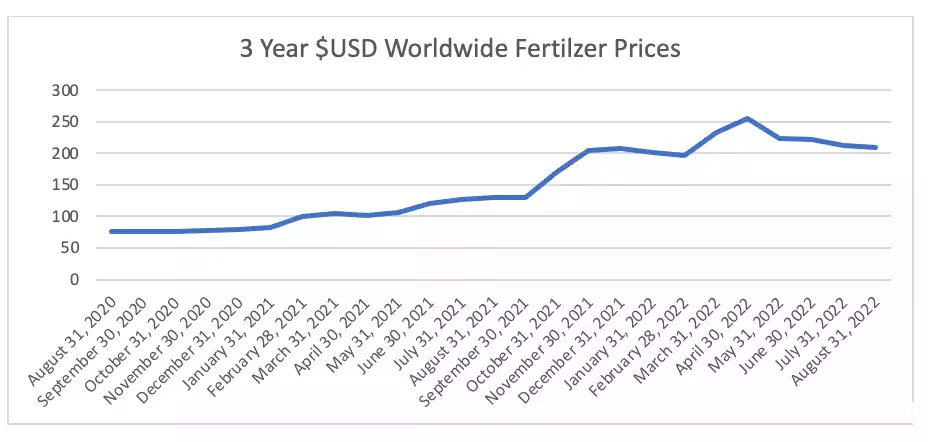Food Inflation — Why
News
|
Posted 19/09/2022
|
10970
We’ve previously examined inflation being driven by both energy increases and the tight labour market, but now headlines around the world are talking about CPI being driven by increasing food prices. Energy had a direct and immediate impact on inflation as we spoke about huge increases in electricity and transportation costs. Then we had inflation driven by a tight labour market with employment levels at record lows (despite decreasing participation rates). Now more recently breaking down current worldwide inflation figures we can now see the next inflation driver coming into worldwide figures. Some of the headlines from August
CNBC on the US: ‘It’s belt-tightening time’ — How to save as food inflation jumps more than 11% in a year
The Guardian ‘New Zealand food inflation highest for 13 years as vegetables and dairy drive prices’
And the Guardian again ‘UK food price inflation the highest level since the global financial crisis’
From AFP News ‘Prices soaring everywhere: From Beans in Brazil to Pork In China’
US INFLATION AND WHAT IT MEANS FOR THE WORLD
In the latest US inflation CPI (8.3% s an expected 8.1%) food was identified as one of the larger contributors (11.4%). Though this seems no surprise, considering Global heat waves and flooding (China, Europe, Australia to mention a few for 2022) and also the Ukraine war, with Ukraine being one of the largest grain exporters in the world. As the input costs of fertilizer and energy – we will go into more detail shortly on this. But now consider countries outside of the US. The DXY is at an all time high, meaning the dollar is the highest its ever been against a basket of international currencies, in 1 year the EURO has depreciated ~ 20%, the AUD ~ 10%, the JPY ~ 25% and the Turkish Lira 55%. As commodities including food are normally quoted in USD (less frequently the Euro), the level of inflation coming through food especially outside of the US is staggering and appears to be on a strong upward trajectory in all countries including the US.
|
Country
|
Inflation
|
Month Reported
|
|
Argentina
|
70.60%
|
Jul-22
|
|
Australia
|
5.90%
|
Jun-22
|
|
Canada
|
9.20%
|
Jul-22
|
|
European Union
|
13.99%
|
Aug-22
|
|
France
|
7.70%
|
Aug-22
|
|
Germany
|
16.60%
|
Aug-22
|
|
China
|
6.10%
|
Aug-22
|
|
Japan
|
4.40%
|
Jul-22
|
|
Span
|
13.75%
|
Aug-22
|
|
Switzerland*
|
2.50%
|
Aug-22
|
|
Thailand
|
9.35%
|
Aug-22
|
|
Turkey
|
90.25%
|
Aug-22
|
|
United Kingdom
|
13.10%
|
Aug-22
|
Source: Food Inflation - Countries - List (tradingeconomics.com)
*The Swiss Franc has depreciated 4% to the USD in the past 12 months
FOOD INPUT PRICES AND DELAYED INFLATION
As we all know there’s been massive increase in electricity and gas costs over the past 6 months. This has affected everyone with increased cost of transport and cost of heating. But energy is a major input into farming – fertilizers, transportation and gas for glass houses to name a few. On top of this the high prices of fertilizer and other inputs, means some farmers have switched for less expensive albeit less productive crops as they cannot afford the higher priced inputs, reducing food output.
A wheat crop takes 4 months from sewing to cropping, there is also planning before this. So for arguments sake lets call a crop cycle 6 months. This means we are only just starting to see the energy inputs from 6 months ago causing inflation in food. Add to these depreciating currencies against the USD food inflation will be a major CPI contributing factor to all countries in the next 6-12months. Fertilizer prices began spiking in November 2021, with the highest prices in Apr 2022, therefore what we are seeing now is only the beginning of this inflation.

When will food inflation shock end?
Provided there are no more climate shocks or energy shocks, though this seems increasingly unlikely, this will likely play out till the end of the 2022 calendar year as prices have begun stabilising at the spiked levels through June. But this stabilisation will only occur if the USD stops appreciating and pushing inflation onto the world. The current levels of inflation attributed to food are unsustainable and are going to drive more and more people, especially in poorer and developing countries below the poverty line unless something gives….